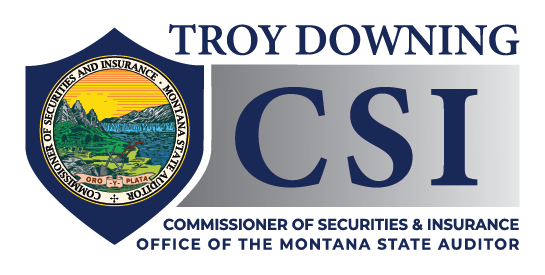HELENA — Partisan political factions lined up Tuesday at the Capitol to lampoon or support proposed new 2022 congressional districts for Montana, pitching their arguments two days before a state commission will choose a tentative final map.
Republicans rallied outside the Capitol and then packed the hearing room before the Districting and Apportionment Commission, with one GOP lawmaker even bringing a pumpkin carved with one of the Democratic-proposed districts.
“This north-south district is a joke,” said Rep. Derek Skees of Kalispell, holding his pumpkin aloft. “It puts three of the four fastest-growing communities inside this district. So within just a few years, this district will outpace the other district. I really hope that you realize that this is not a treat, this is a total trick.”
People from each side of the political spectrum criticized Democratic and Republican proposals as favoring their respective parties, or failing to meet goals such as keeping “communities of interest” together or making the districts politically competitive.
The five-member commission listened to testimony, both in-person and via the Internet, for several hours – but any decision will wait until Thursday.
And, even then, the panel may not choose one of the exact nine proposed maps that were the subject of the hearing.
Commission Chair Maylinn Smith told MTN News it’s likely the commission will cobble together a hybrid proposal, after making some tweaks to existing maps to reflect concerns made during the public comments.
That “tentative final” map may face another public hearing before the commission takes a scheduled final vote Oct. 30 on the two new districts. The commission has until Nov. 14 to submit the final districts to the secretary of state, in preparation for the 2022 election.
The map will create two new congressional districts, as Montana gained a seat because of population increases reflected by the 2020 Census. The state has had a single congressional district since 1992, after it lost one of its two seats after the 1990 Census.
The commission’s two Republican members submitted four maps, each of which divides the state into east and west halves – and puts most of the state’s fastest-growing county, Gallatin, and the booming university town of Bozeman, into the eastern district.
The two Democratic members submitted five maps, all of which put Bozeman into the western district and then compensate, population-wise, by placing Kalispell and other portions of right-leaning northwestern Montana into the eastern district.
On Tuesday, Republicans generally attacked the Democratic plans as partisan gerrymandering, designed to manufacture a district that would elect a Democratic member of Congress.
“The things I keep hearing about it being competitive, and the partisan issues here, I think are inappropriate,” said Republican state Auditor Troy Downing. “It’s important to stick to the constitutional intent, that we balance that population and make it make sense when you look at a map, so it’s not something with some crazy puzzle piece missing.”
Yet those supporting the Democratic plans said the GOP maps are guilty of the same crime, by diluting the Democratic portions of Bozeman by placing them in the conservative eastern district.
Richard Lyon, a Bozeman attorney, said the GOP proposals are “nakedly partisan,” dividing blocs of Democratic voters into separate districts.
The fast-growing communities in southwest Montana, such as Bozeman and Missoula, should be together in one district, because they share many common interests, he said.
The non-partisan League of Women Voters-Montana also weighed in on the plans, saying that none of the nine maps meets all of the goals it considers important: Fairly representing Native Americans, keeping communities of interest and cities together in one district, making the districts politically competitive, and making sure voters stay engaged.
Rosanne Nash of the league said it’s up to the commission to find a balance among these goals.
“Montana independent commissions have done a good job in the past, and this commission can succeed in drawing a map that’s fair to all Montana voters,” she said.
Was this helpful?
Please give us your feedback!
Please let us know how we could improve this article.
